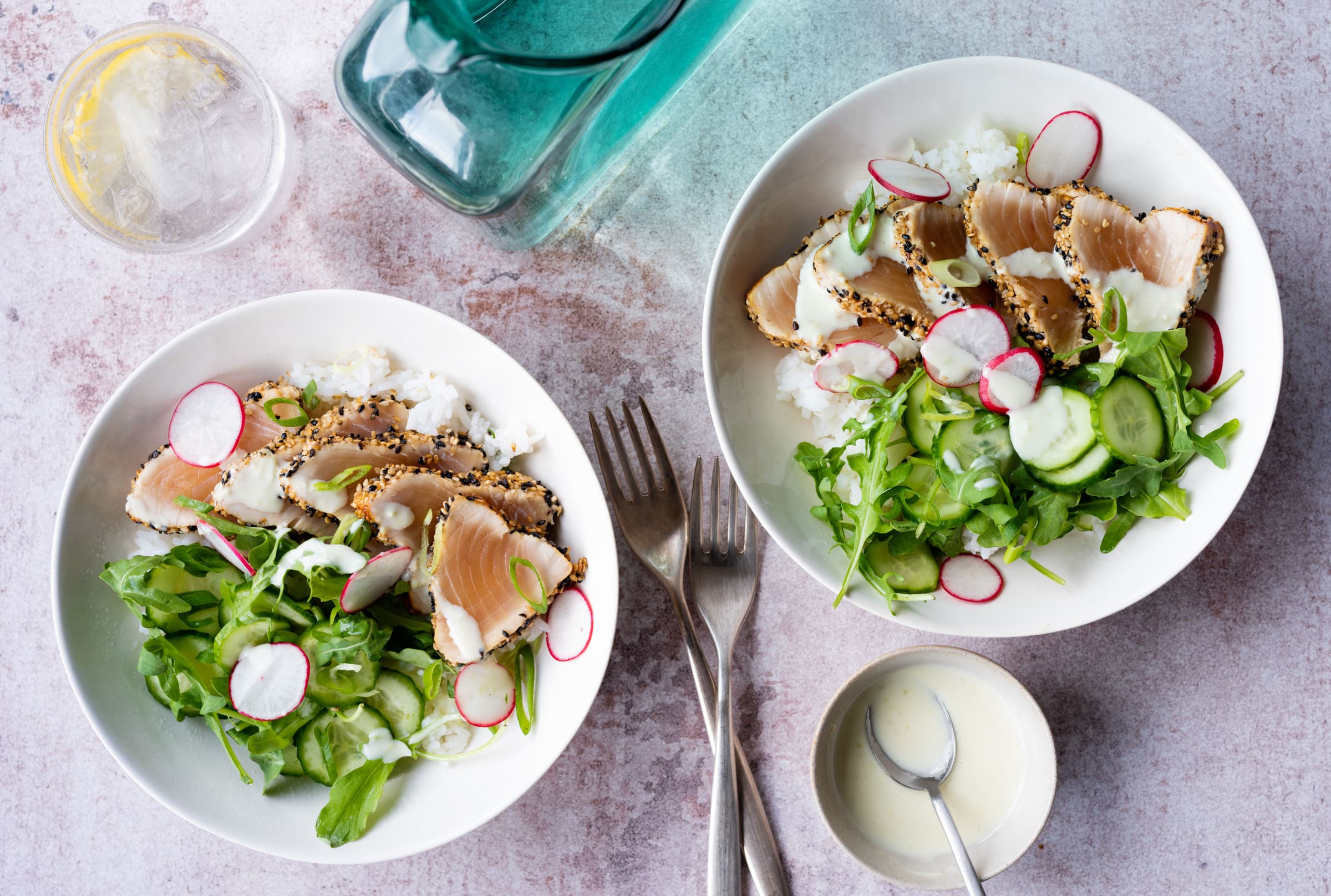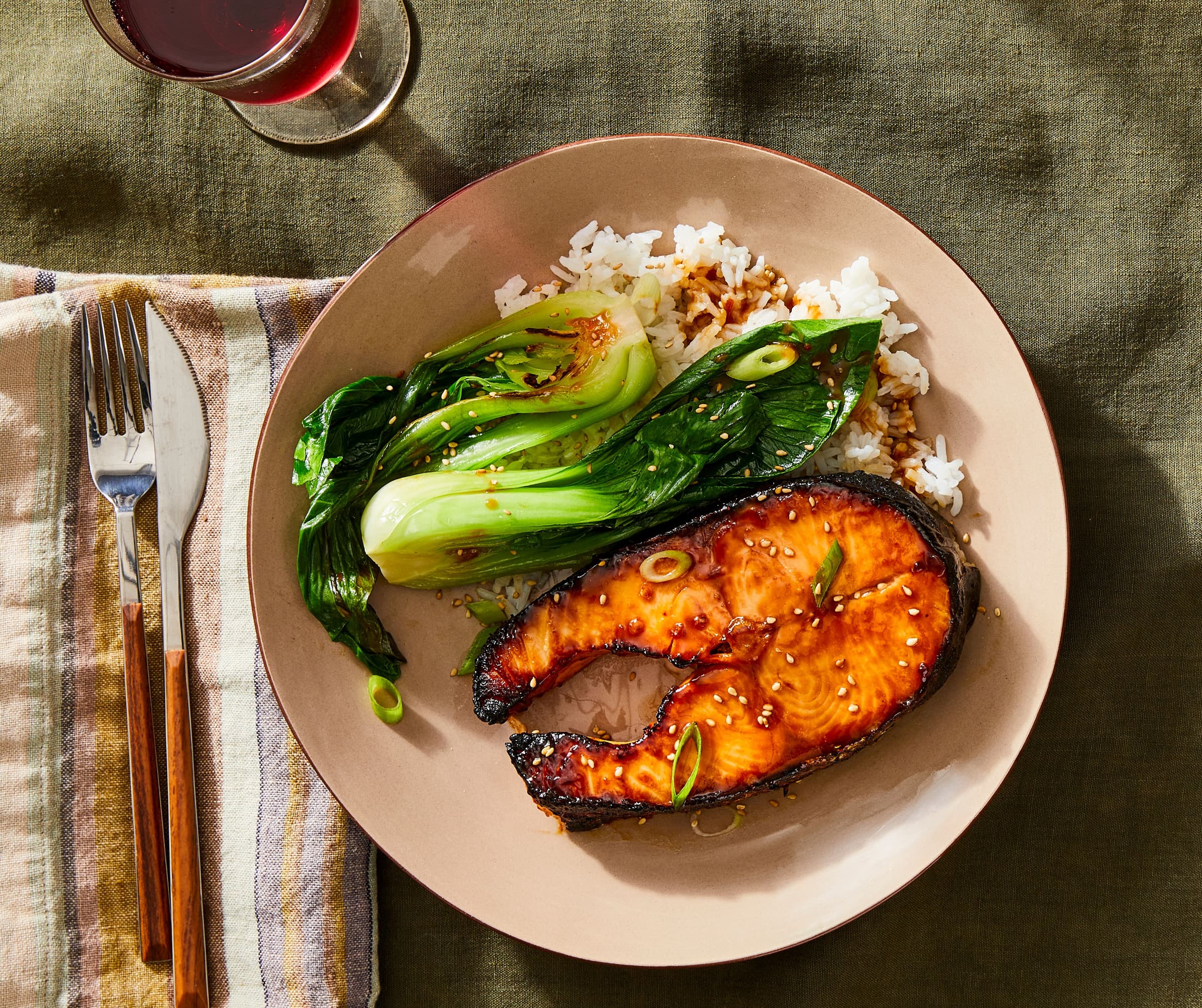In today’s digital era, figuring out how to feed our bodies should be easier than ever. The peril of easy research, however, is that not all answers are good answers, and unfortunately, it often falls to consumers to distinguish between good and bad information. If you’re confused by conflicting or dubious claims about what’s good for you, you aren’t alone.
When it comes to what to eat or not eat, we at Sitka Seafood Market look to experts. We love our data, and believe it speaks loud and clear on this matter: when consumed appropriately, fish can play an important role in your body’s nutrition — especially wild fish. We want you to eat more of it. Not because it supports an economy of small-boat fishermen and tradespeople throughout Alaska (it does), but because experts we trust continue to extol its virtues when consumed thoughtfully. Here’s why.
The Bottom Line
Full of healthy fats and vitamins, fish is a nutrient powerhouse. Time and again, its consumption has been linked to significant improvements in health and quality of life. Wild fish in particular not only boast high concentrations of important nutrients, but are less likely than farm-raised fish to carry contaminants. But where to begin?
**As always, be sure to consult your physician before making any significant changes to your diet.
Choose Wild Over Farmed

Because their diet is controlled and fortified, farmed fish are shown to contain slightly higher concentrations of important omega-3 fatty acids (1). However, they also boast a much higher saturated fat content (i.e. fat you don’t want) and are far more caloric (2). Farmed fish are also far more susceptible to disease (3) and boast a drastically higher concentration of persistent organic pollutants (POPs) linked to diabetes, obesity and stroke, as well as cancer-causing carcinogens (4). Weighed against the risks, wild fish are a safer option and equally nutritious — if not moreso.
Learn more about the difference between wild and farmed salmon from our Science and Policy Director Michael Kohan.
Transparency Matters

Fisherman Jeff Farvour and first mate Artemis with the F/V Apollo.
The best way to ensure you’re eating nutritious seafood is to know where and by whom it is caught and processed. We’re sorry to say it, but the stuff you’re buying at the grocery store may not be your best bet. In fact, a recent study by the conservation non-profit Oceana used DNA testing to reveal that one in three fish purchased in the United States is mislabeled.
Because foreign seafood operations do not adhere to US processing regulations, imported farm-raised fish tend to be high in both contaminants and antibiotic use. And American wild-caught fish isn’t necessarily better: to cut costs, commercial fishing operations based in the United States often ship seafood overseas for processing. According to the National Oceanic and Atmospheric Administration (NOAA), only 15 to 30% of the seafood consumed in the United States is actually caught and processed here, with the remainder imported from foreign processors. Not only are we unable to account for processing standards abroad, but by the time fish gets to our local store, it’s traveled across the world twice. No thanks. (5) (6)
Our advice? Source your fish from a small, sustainable operation with a human face.
Get Your Fat(ty Acids)
It’s time to dispel the notion that fats are unilaterally harmful. Fat helps our bodies absorb key vitamins, acts as an energy source, and keeps our immune, circulatory, respiratory AND renal systems in tip-top shape (7). Some are better than others, though. Omega-3s are one such fat, and they’re found most abundantly in — you guessed it — fish. Since our bodies can’t make omega-3s themselves, the FDA recommends eating at least 8 oz of fish a week. Try this Miso-Baked salmon recipe for your next virtuous meal, and read more about the benefits of omega-3s.
Eat Your Vitamins
Essential for bone and immune health, Vitamin D is found abundantly in oily fish like Salmon or Mackerel (8). And if you needed yet another reason
to choose wild over farmed, pen-raised salmon contain a mere quarter of the Vitamin D present in their wild counterparts (9). Try this Wine-Poached Salmon salad for a fresh and substantial meal.
Keep Your Heart Healthy
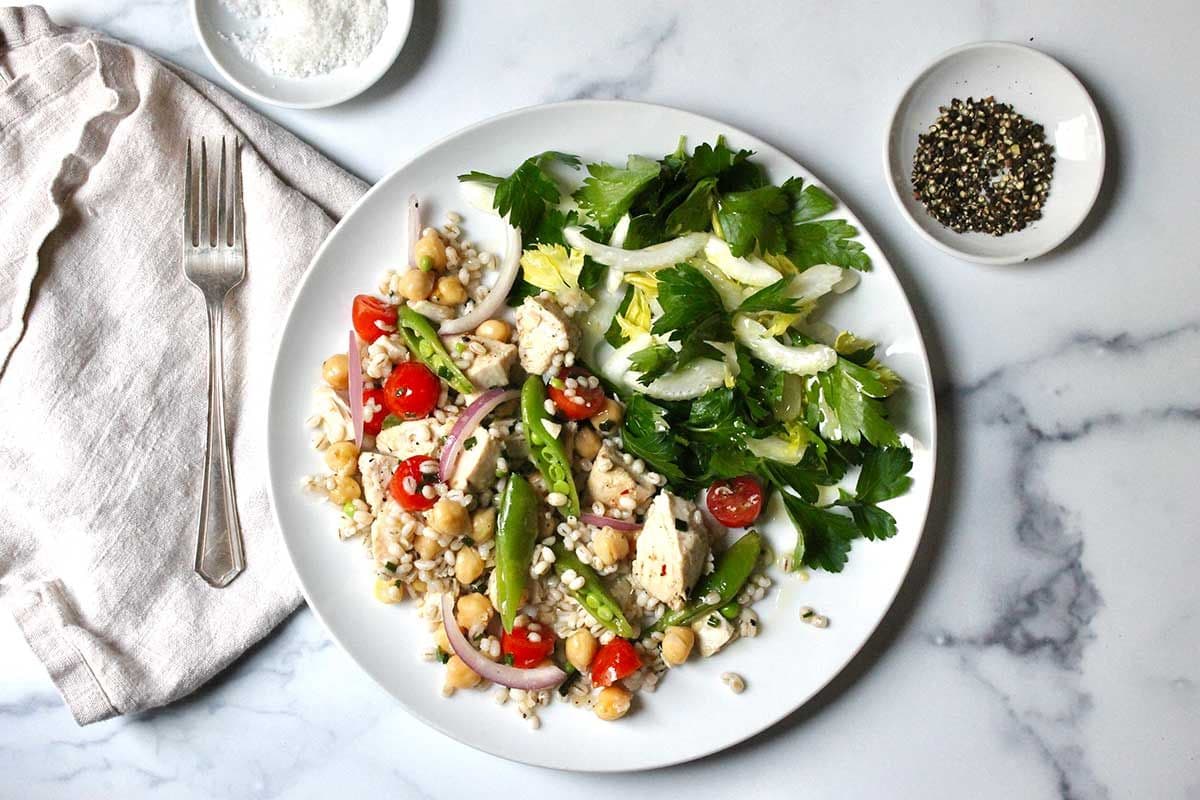
Heart disease is the leading cause of death in the United States, but luckily, eating fish even once a week has been linked to a significantly reduced risk. (10) (11) (12) (13). Try this oil-poached tuna and grain salad from our test kitchen for a heart-healthy dinner. Beyond nutrient-rich tuna, this dish boasts fiber-abundant grains and healthy fats, like extra virgin olive oil.
For a Healthy Pregnancy, Eat Fish as Recommended
Contrary to popular belief, pregnant women can — and should — eat a variety of fish every week. Omega-3s help develop brains, boost immune systems, and decrease risk of developing food allergies in breastfeeding babies (14). Mercury is still a concern, so refer to this chart from the FDA to determine which species are safe to eat while expecting. For a delicious, healthy meal, we recommend this quick and easy tomato-poached cod, complete with nutritious lycopene-rich tomatoes and punchy, bright herbs.
Fish Makes for Healthy Kids
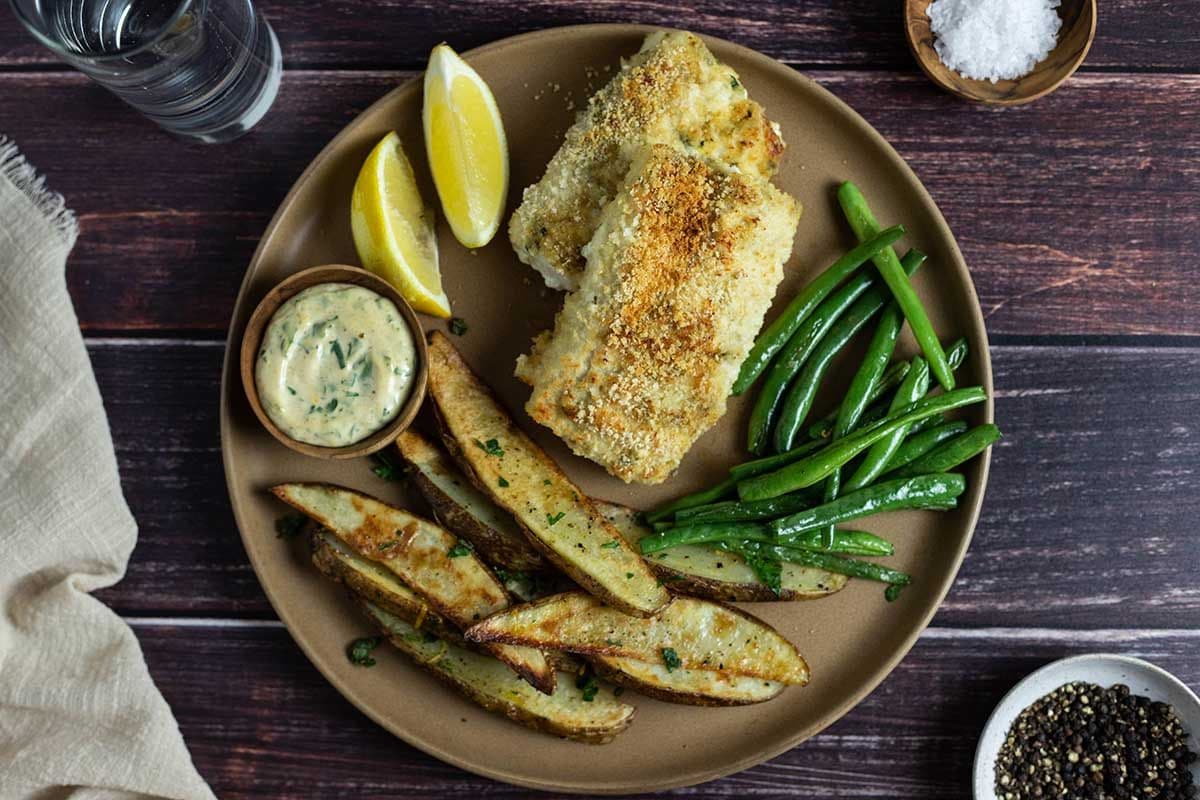
Many avoid serving children fish out of concern for mercury, but again, fish is essential for health and non-toxic depending on the species. Salmon, shrimp, cod, tuna, and crab are all safe choices recommended by the American Academy of Pediatrics (15). Serve your kids this incredible take on the kid-friendly classic fish fry, or if you want to avoid fried food, try this oven-baked fish fingers recipe complete with potatoes and green beans.
Nourish Your Brain
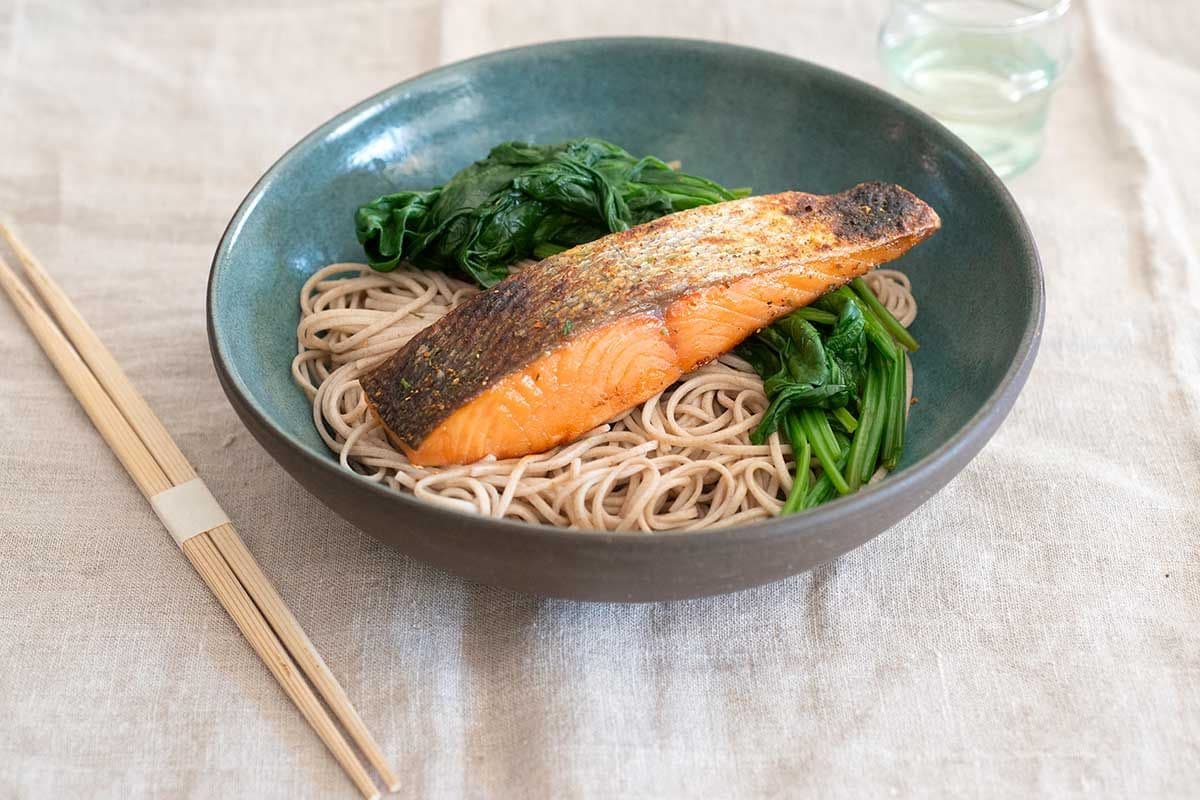
As with heart disease, seafood consumption can stave off cognitive decline. Omega-3s help the growth and function of our brain cells, reduce inflammation in the brain, and increase serotonin levels. In particular, those who suffer from depression may consider eating more seafood to replenish vitamin D, which is neuroprotective (16). Try this delicious salmon noodle bowl to get those omega-3s.

